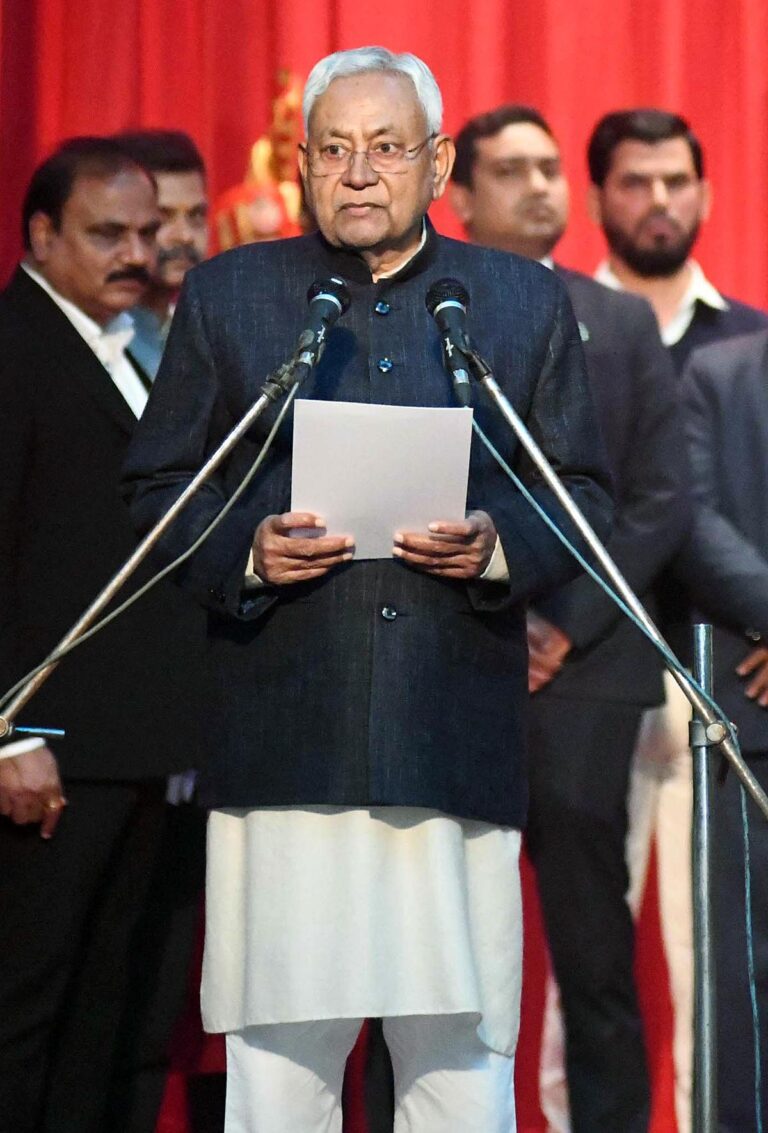After a surprising turn of events, JDU leader Nitish Kumar was sworn in as the Chief Minister of Bihar for the ninth time, aligning with the BJP-led NDA alliance and breaking ties with the Mahagathbandhan coalition, which included the RJD and Congress. During the swearing-in ceremony at Raj Bhavan, eight ministers, including Deputy Chief Ministers Samrat Chaudhary and Vijay Sinha, took their oaths alongside Kumar. The presence of BJP chief JP Nadda and chants in support of Prime Minister Narendra Modi underscored the political significance of the event.
Nitish Kumar takes Oath as Bihar CM
In his remarks, newly appointed Deputy CM Samrat Choudhary affirmed his commitment to the BJP and expressed readiness to fulfill any role assigned to him. Prime Minister Modi congratulated Kumar on rejoining the NDA, emphasizing the alliance’s dedication to Bihar’s development. However, Kumar’s departure from the Mahagathbandhan was viewed as a setback for the coalition, although outgoing Deputy CM Tejashwi Yadav maintained confidence in its strength.
Kumar justified his decision to leave the Mahagathbandhan, citing dissatisfaction with its governance and stating that he heeded advice from various quarters, including within his own party, leading to the dissolution of the government. Assam Chief Minister Himanta Biswa Sarma suggested that the alliance lacked ideological coherence, hinting at its inevitable demise.
Political strategist Prashant Kishore labeled Kumar as the ‘Sardar of Palturam’, insinuating that Bihar’s political landscape is characterized by frequent shifts in allegiance. Kishore predicted dramatic developments in Bihar’s political arena before the 2025 elections, suggesting that the current alignment between Kumar’s faction supported by the BJP and the opposition led by the RJD is unlikely to persist.
The narrative surrounding Kumar’s return to power reflects the intricate dynamics of Bihar’s political ecosystem, marked by strategic realignments and ideological flux. Kumar’s decision to pivot towards the NDA underscores the pragmatic considerations that often shape political alliances, while his detractors view it as emblematic of opportunism. Looking ahead, the unfolding drama in Bihar’s political landscape is poised to shape the trajectory of the state’s governance and influence the outcomes of future elections. Kumar’s maneuvering, along with the responses it elicits from his adversaries and allies alike, will continue to be a focal point of political discourse, reflecting the enduring complexity of Indian politics at the regional level.




